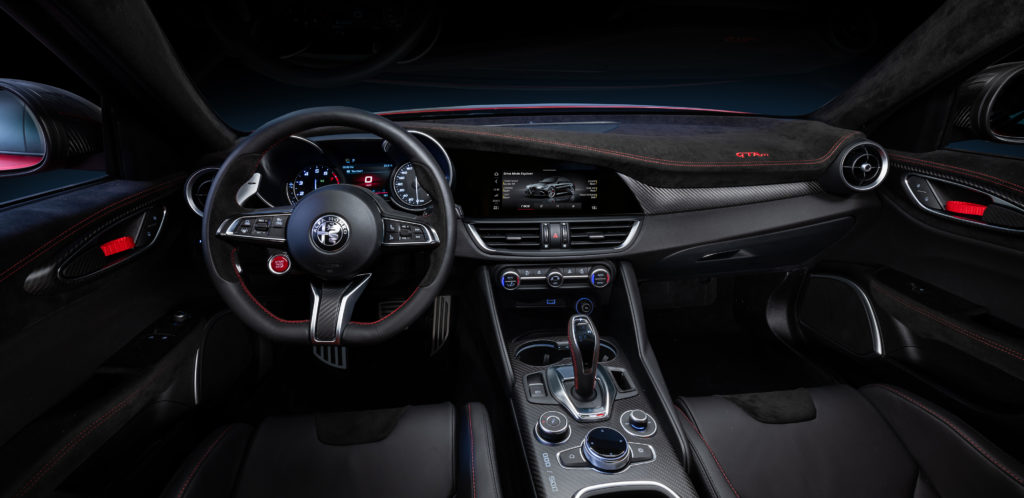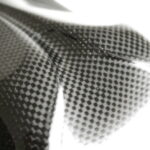The new Giulia GTA is inspired by its 1965 namesake, the ‘Gran Turismo Alleggerita’, developed by Autodelta and based on the Giulia Sprint GT.
Available in two versions, the Giulia GTA with four seats and the Giulia GTAm with two race seats, roll-bar and six-point harness, they will both feature the 2.9-litre V6 Bi-Turbo petrol engine producing 540hp along with a raft of weight saving solutions to remain true to the ethos of the original 1965 model.
Specific technical features and functional style
On the Giulia GTA, the Alfa Romeo engineers have worked to improve the aerodynamics and handling but above all to reduce the weight. The active aerodynamics were specifically studied to increase the downforce. These solutions contain technical know-how that comes directly from Formula 1, thanks to the synergy with Sauber Engineering and the use of the Sauber Aerokit. The same task is assigned to the side skirts, the specific rear spoiler and the active front splitter.

The titanium Akrapovič central exhaust system, integrated in the carbon fibre rear diffuser, is also new, as are the 20-inch centre lock wheels. Handling at high speeds has been improved by widening the front and rear wheel tracks by 50mm and developing a new set of springs, shock absorbers and bushings for the suspension systems.
On the GTAm, the aerodynamic front has been optimised by adding a larger front splitter and a real carbon-fibre rear wing, which ensure a perfectly balanced load at high speeds. In terms of performance, the Alfa Romeo 2.9-litre V6 Bi-Turbo engine, made entirely of aluminium and capable of unleashing no less than 510hp in the standard configuration, reaches an output of 540hp in the Giulia GTA thanks to the meticulous development and calibration work of the Alfa Romeo engineers. A new Akrapovič central exhaust system, in titanium and gives the car an unmistakable sound.
An excellent power-to-weight ratio
Power on its own is not enough to ensure extraordinary performance. The work done to reduce the vehicle weight has been meticulous, with the total weight reduction amounting to 100 kg. To achieve this the GTA uses lightweight materials such as carbon fibre for the drive shaft, bonnet, roof, front bumper, front wheel arches and rear wheel arch inserts and the shell of the sports seats with six-point Sabelt seat belts in the GTAm. Aluminium has been used in the engine, doors and suspension systems and various other composite materials have been used throughout.

In the GTAm, Lexan – a unique polycarbonate resin which comes straight from the world of motorsport – has been used in the side and rear window frames, further contributing to the weight reduction. The result is a weight of around 1,520kg which, combined with the increase in output to 540hp, brings the power-to-weight ratio to 2.82 kg/hp, making the Giulia GTAm capable of delivering extraordinary performance. Its acceleration from zero to 62mph, with the Launch Control system, is just 3.6 seconds. The Giulia GTAm is a two-seater configuration that is road legal, with front splitter and larger visible rear wing in carbon.
Source: JEC Composites – The editorial changes are made by Compositi magazine.
More information: www.alfaromeo.com











